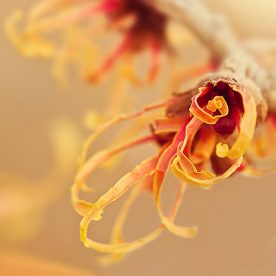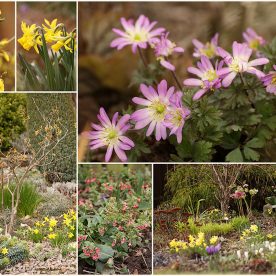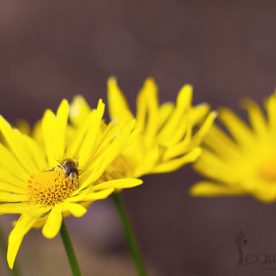Very rarely does a houseplant feature in this blog … but on a weekly basis for over 18 years I've been asked "how to get Phalaenopsis orchids to bloom again"
So let’s begin by thinking of the following mind picture…
- Let’s imagine that you're going on holidays.
- You're going somewhere that has only two seasons - the dry season and the wet season, where there's not going to be much water or food.
- It's going to be the dry season when you arrive.
- There's going to be at least a difference of 10 degrees from day and night time temperatures.
- You're going to be staying there for 12 weeks rest.
- After 12 weeks the holiday is over! you'll go back home and start your normal watering and feeding routine again.
Got that picture in your head?
Well the next time you want to try and get your moth orchid (Phalaenopsis) to bloom again transport yourself into that little mind picture! It's easy to remember, but first we need to cover a few basics...

This post may contain affiliate links, which means I may receive a commission if you click a link and purchase something that I have recommended. As an Amazon Associate, I earn from qualifying purchases. Please check out my disclosure policy for more details.
How To Get Phalaenopsis Orchids To Bloom Again?
Well firstly we have to keep it alive!
Phalaenopsis have become mainstay houseplants in the home. They are longer lasting than a bouquet of flowers and so easy to look after. Well …easy if you follow my techniques as orchids that die are usually killed through kindness.
How to Correctly Water Phalaenopsis Orchids
If you've been looking after your orchid correctly it should get watered once every 10 days after the clocks fall back in autumn, i.e. late October.
And once every week when the clocks spring forward again in late March.
At home, mine are run under the bathroom tap with lukewarm water... without any water touching the leaves so that any excess feed that has built up in the bark gets washed out of the pot. I always use a cover pot so once the pot has drained I will put it back in it's decorative cover pot and leave it until it needs watered again.
How to Feed Your Orchid
They only require a little feeding each month. Once in every 3 "waterings".
Over the years I have used Orchid Myst by Growth Technology (affiliate link) with great success.
Cutting Off The Old Flower Spike
Don't be too impatient. Even if all the flowers have finished I always leave my flower spike alone and wait for it to die back naturally. If you're patient you might even get a new branch coming out from one of the notches on the stem. Once the stem is dying away and you're sure nothing else will sprout from a notch cut the dying stem off above the 2nd notch from the base.
Let Your Orchid Grow Two New Leaves
When your orchid has finished flowering it will need to grow two new leaves before it can produce a new flower spike. Be patient as some orchids are quicker than others at producing new leaves. If yours is slow at producing new leaves it might need re potted into fresh bark. I've also used Orchid Focus Growth (affiliate link) to encourage the growth of new leaves.
Ok, if you're following me so far and you've succeeded in growing 2 new leaves - NOW is the time to recall that 'mind picture' at the top of this blog post.
- Orchids in the wild go dormant during the dry season so you need to create that type of environment in your home. (Let’s imagine that you're going on holidays …)
- Move it to a colder room. It's much easier to do this from autumn onwards as the nights are getting colder by then.
- Let it 'think' it's dying by giving it no food and just a little water.
- Make sure that it has a difference in temperature of around 10 degrees between day and night.
- Keep it like this for about 12 weeks
- Then place it back in its normal position in the warmer room.
- Go back to your feeding and watering routine and very soon it should send out another flower spike.
I emphasize "should" as it sometimes doesn't happen. Orchids these days are created from tissue culture and sometimes you can get a 'runt' that just refuses to re flower. If you've tried and tried doing these tips without success just go out and buy a new orchid! However, I know from experience that for the vast majority of people my tips above do help to produce new flower buds.
How to Repot Phalaenopsis Orchids
- Orchids need repotting every 12 - 18 months and I repot my orchids into the same sized pot most of the time.
- I shake off the old compost from the roots.
- You can use the same pot again if the orchid hasn't got too big.
- Just make sure you clean your pot well.
- I sterilize my knife/scissors over a flame and cut off any damaged or dried up aerial roots. That should reduce some of the bulk of the orchid and help it fit back into the same pot again.
- The American Orchid society recommend dipping the ends of the roots that you've cut in cinnamon powder (the stuff you find in your kitchen cupboard.) It's supposed to prevent infection, although in the UK and EU it isn't licensed as a fungicide… so it's up to you whether you follow the advice of the American Orchid society or not.
- Add new bark, leaving a couple of the aerial roots hanging over the pot.
- Don't feed the orchid for the first 6 weeks.
- Should I use a clear pot? A clear orchid pot (affiliate link) is best for Phalaenopsis orchids as it aids photosynthesis, it also helps show when the orchid needs watered. When the roots are green it doesn't need to be watered. When they are grey - they need to be watered. Plus having a bulge inside the base of the pot prevents any water from lingering too long around the base of the plant.
This video demonstrates how to repot and rejuvenate a neglected orchid using Orchid Focus Repotting Mix (affiliate link). There are plenty of repotting mixes on the market but some of them are too fine and hold too much water. Orchids really don't like that as they survive in the wild attached to tree trunks and don't really need lots of soil.
This video shows how to restore a neglected orchid.
Many people have asked me what to do with the baby orchids that start to sprout further up the stem. Those 'baby orchids' are called keikis and this video shows how to propagate them and in turn grow a new orchid for free!
How to Prevent Bud Blast
Once you have managed to get your orchid to produce new buds you have to make sure that they are not affected by bud blast.
When the newly formed buds of moth orchids turn yellow, shrivel up and fall off prematurely it’s called bud blast.
Bud Blast On The Shop Floor
In the retail trade I have seen plants arrive on danish trolleys that have shrink wrap all around the trolley aswell as being individually wrapped in a plastic sleeve. The build up of ethylene gas inside that trolley can encourage the buds to turn yellow and in turn the damage is done before the orchid even reaches the shop floor. As a result the stressed orchid will drop some or all of its buds within a week or so.
I know of many people, myself included who will not buy a phalaenopsis unless all or nearly all of their buds are open.
Bud blast at Home
However, you can also get bud drop at home due to moving the plant to a new location when it has just formed its new buds. The immature fresh new buds are so susceptible to stress. So moving the orchid somewhere too hot, or near an oven in the kitchen or too cold with a draught will cause bud blast.
As Phalaenopsis orchids have a sensitivity to ethylene gas their buds can drop and their flowers can age prematurely when placed near a fruit bowl or if they are subjected to tobacco smoke.
Any stress in relation to incorrect watering can also make them drop their buds.
Moth orchids dislike temperatures of more than 25C in the house. More natural ethylene gas is produced by the plant when it gets too warm plus the air gets too dry around them. If they get too stressed in conditions like that they will also drop some of their buds.
Further Reading







